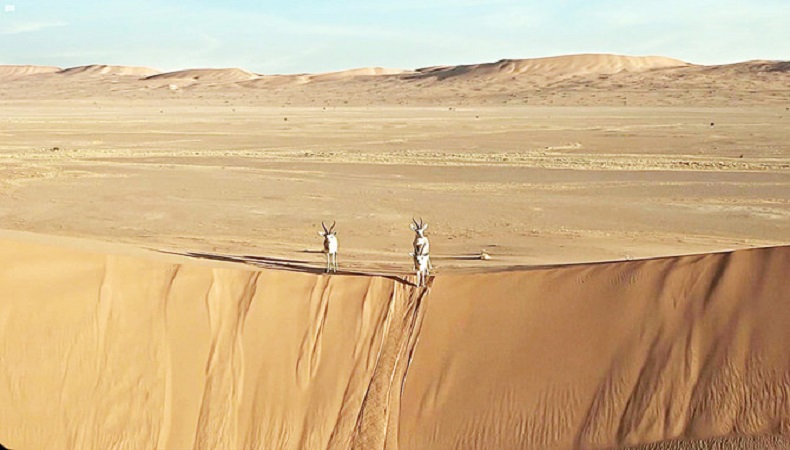Arab World’s UNESCO World Heritage Nominations 2023

The World Heritage Committee of UNESCO met in Saudi Arabia in September 2023 for a protracted session to consider adding several sites to the esteemed World Heritage List. Three outstanding sites from Arab nations were included in the nominees. These nominations are significant historically and culturally and represent the nations’ dedication to preserving their cultural heritage.
Uruq Bani Ma’arid, Saudi Arabia
One example of Saudi Arabia’s commitment to maintaining its natural beauty and indigenous species is Uruq Bani Ma’arid, which spans 12,000 square kilometers in the Ar-Rub al-Khali desert. Founded in 1995 by Royal Decree, its main goal was to safeguard the Arabian oryx, a species that was previously in danger of going extinct. 500 oryx specimens are thought to be free to wander the grounds of ‘Uruq Bani Ma’arid today, serving as a thriving sanctuary for this famous animal. Also successfully restored and thriving are the mountain and Arabian sand gazelles.
This nomination shows Saudi Arabia’s dedication to environmental protection and is a ray of hope for all species that are endangered. The nation’s recognition of the inextricable connection between environmental preservation and cultural heritage is seen in this.
Keep Reading
Jericho/Tell es-Sultan, Palestine
The historical site of Tell es-Sultan is located in Jericho, which is frequently considered to be the oldest city in the world. This prehistoric settlement, which is close to the Dead Sea and is the world’s lowest ancient settlement, is from the Epipaleolithic era and is situated below sea level. Its historical importance goes back to the Neolithic period, demonstrating the growth of agriculture and a complex society.
The lengthy legacy of Jericho is evidenced by the city’s diverse history, which includes a variety of names and cultural influences. The importance of the location is shown by the finding of the Canaanite name “Ruha,” which was carved into stone scarabs in the second millennium BC. Palestine hopes to showcase the contributions of ancient civilizations to our collective heritage and celebrate its rich past by nominating Jericho.
Djerba, Tunisia
In the history of the Mediterranean, Djerba—often referred to as the “Island of the Lotophages” by Homer—has a special role. Its historical significance goes beyond being a stopover for the Phoenicians to include a hub of trade and culture in classical antiquity. With the largest Jewish population in Tunisia and the second-largest in all of the Arab world, Djerba is known as a model of peaceful coexistence. The island is home to the Ghriba synagogue, which is the oldest in both Africa and the Mediterranean West.
Djerba’s nomination by Tunisia is a sign of that country’s dedication to upholding interfaith harmony and protecting its multicultural history. It emphasizes the island’s position as a link between many civilizations while highlighting its historical and cultural value.
The nominations of ‘Uruq Bani Ma’arid in Saudi Arabia, Jericho/Tell es-Sultan in Palestine, and Djerba in Tunisia to be listed on UNESCO’s World History List in 2023 serve as examples of the rich and varied history of the Arab world. These nominations are a monument to the countries’ efforts to preserve their cultures, histories, and environments. They also serve as a reminder of the need for everyone on earth to work together to preserve and honour the world’s distinctive and priceless natural and cultural riches.







